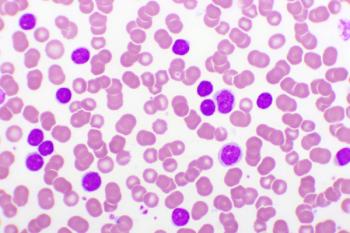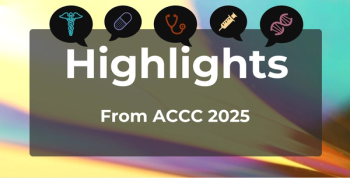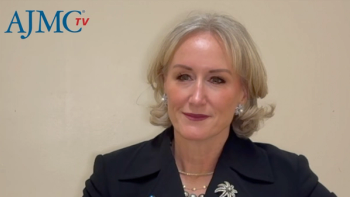
Money, Mandate Are Keys to FDA's Drive for Use of Real-World Evidence, Gottlieb Says
Former FDA Commissioner Scott Gottlieb, MD, who has returned to the American Enterprise Institute, left FDA in April after 2 whirlwind years that saw a record pace of approvals and policy actions that covered everything from high drug prices to teen vaping. He spoke Friday in Philadelphia at Patient-Centered Oncology Care®, the annual meeting of oncology reimbursement stakeholders held by The American Journal of Managed Care®.
Use of real-world evidence in the drug approval process will accelerate rapidly, former FDA Commissioner Scott Gottlieb, MD, said Friday, because Congress has given the agency both the money and a mandate to make this happen.
Real-world evidence, which can include data from electronic health records (EHRs) or claims, allows regulators to “fill in the blanks,” which Gottlieb said can eliminate the need for strict randomization when evaluating treatments for rare conditions or other unmet medical needs.
Gottlieb, who has returned to the American Enterprise Institute,
He began his talk by sharing that he was in the midst of a Twitter spat with a Trump administration official who thought he’d wasted his time on tobacco regulation.
“I just got a text from someone pretty senior asking me to calm down,” he said, causing the room to erupt in laughter. Then it was down to business.
As FDA commissioner, Gottlieb advanced the use of real-world evidence with the December 2018
“Why this is really an inflection point,” Gottlieb said, “is now the agency has an obligation to figure out how to use practical data to answer regulatory questions.”
FDA now has money and direction from Congress, he said, “So it has to do it.”
Real-world evidence is not a complete unknown at FDA. Gottlieb said that some later indications for imatinib (Gleevec) were based on what today would be called real-world evidence. The difference now, he said, is that when a sponsor comes in with an application that makes use of EHR or claims data, regulators will be tasked with coming up with ways to incorporate that evidence in their decision-making process.
“You’re going to be pushing on an open door,” Gottlieb said. “That really, in my view, changes the equation.”
Science Leads the Way
Gottlieb is credited with creating a productive atmosphere at FDA that led to
“Leadership can have an impact at the margins,” the former commissioner said, but in an indirect way. The jump in approvals, he said, “was not just because we were making policy changes or because the culture had changed,” but because Gottlieb said he took steps to “insulate” the regulatory staff from politics so they could focus on their work. “I testified 19 times on Capitol Hill,” he said, more than anyone “not facing indictment or under investigation.”
“By and large, what was influencing the review cycle was the nature of the science,” he said. Sponsors were coming in more prepared, with a better grasp of the populations that would benefit from new therapies. The agency was willing to embrace new trial methods like basket trials and the
Most of all, early in clinical trial development, in small sets of patients, “We’re seeing outsize responses,” Gottlieb said. And that meant there were compelling reasons to give patients access to these therapies quickly.
More Advances to Come
Gottlieb pointed to a pair of changes that he believes will yield important dividends in the years ahead. The first is a decision to include rules for digital health tools that can aid adherence in promotional labeling instead of product labeling, so they do not slow down innovation. Sponsors have not exploited this so far, but it’s still early, he said
Second, Gottlieb sees much to gain from the movement toward “
“Right now, if you go from division to division, the nature of how they review is very different; it’s very different from person to person in a lot of ways,” he said.
Gottlieb said when it comes to incorporating real-world evidence, he knows that some might ask “what’s taking so long?”
“Actually,” he said, “It’s moving pretty quickly relative to historical precedent.”
Newsletter
Stay ahead of policy, cost, and value—subscribe to AJMC for expert insights at the intersection of clinical care and health economics.









































